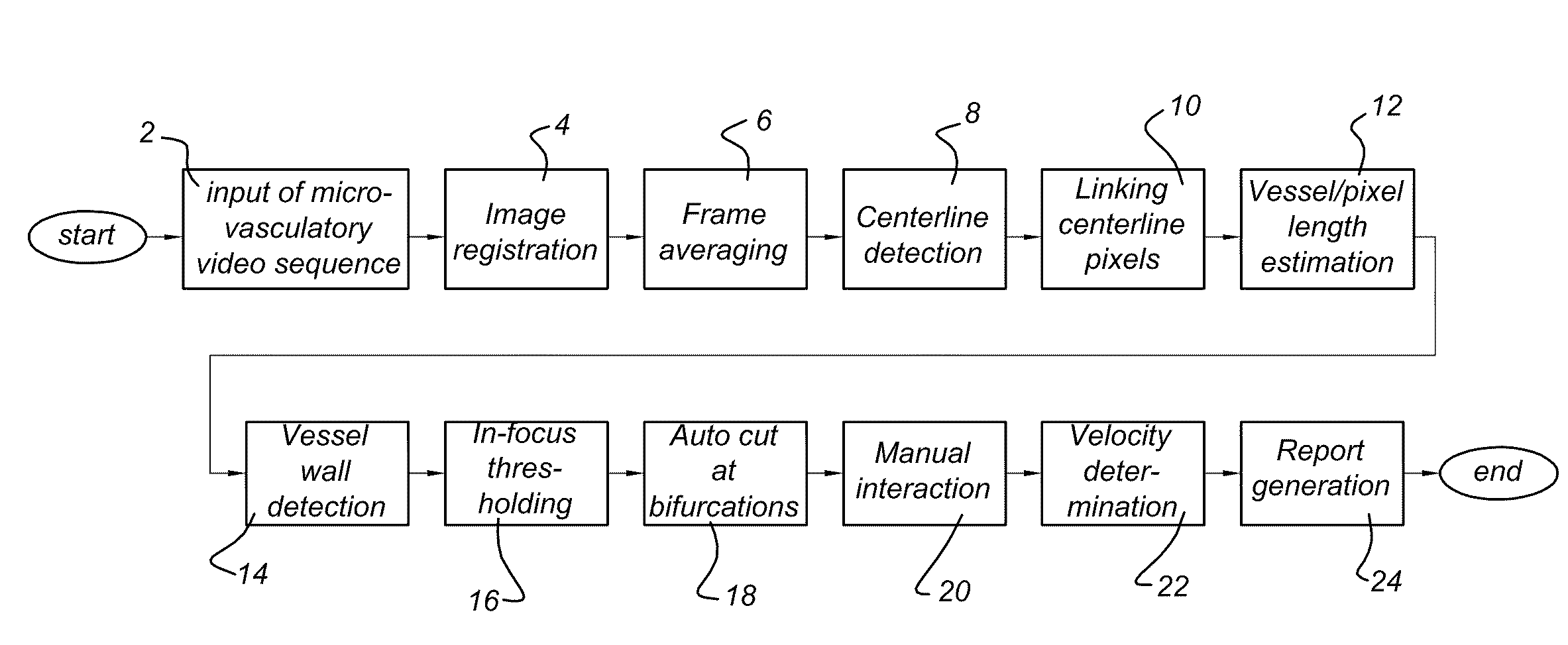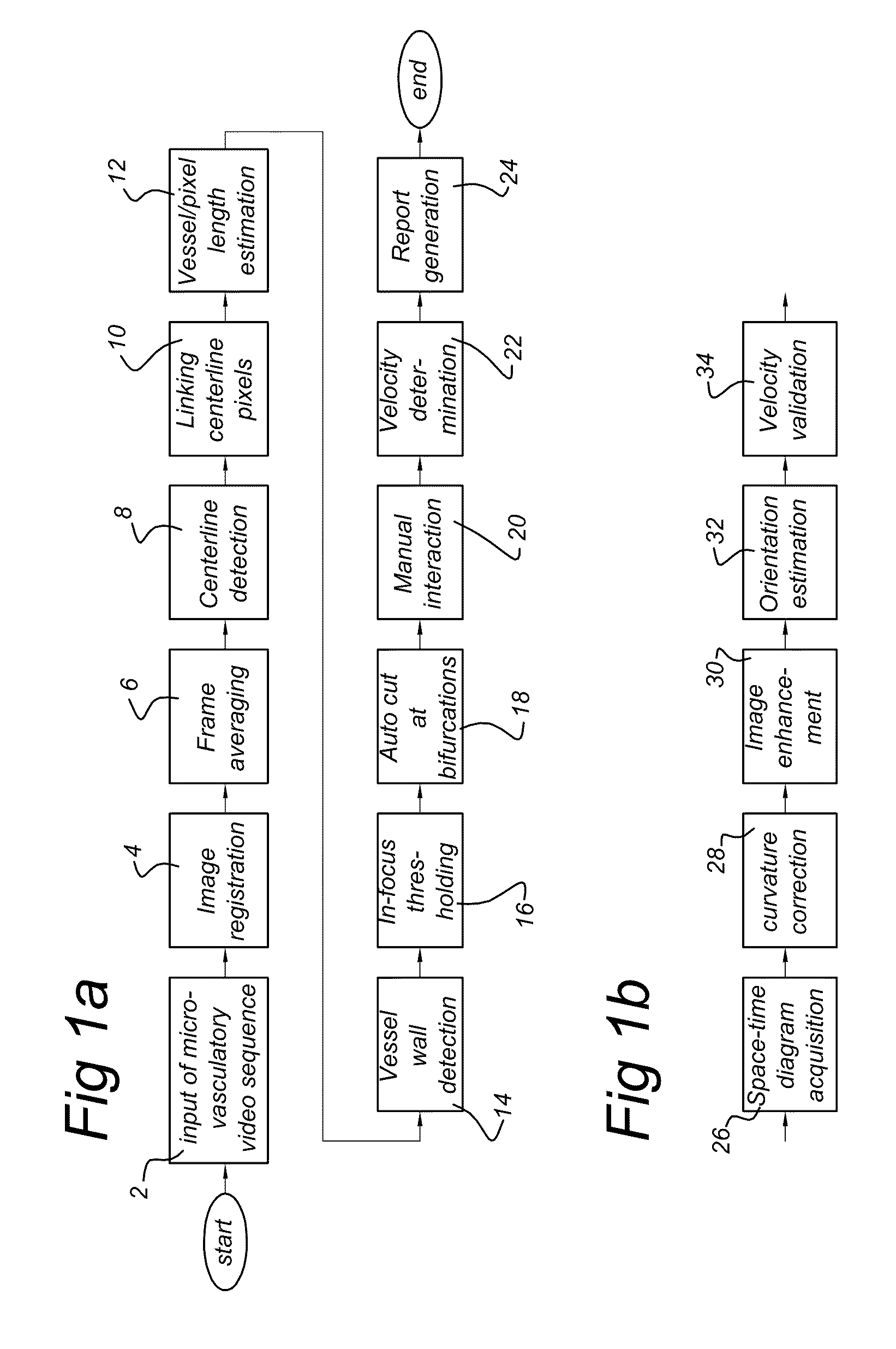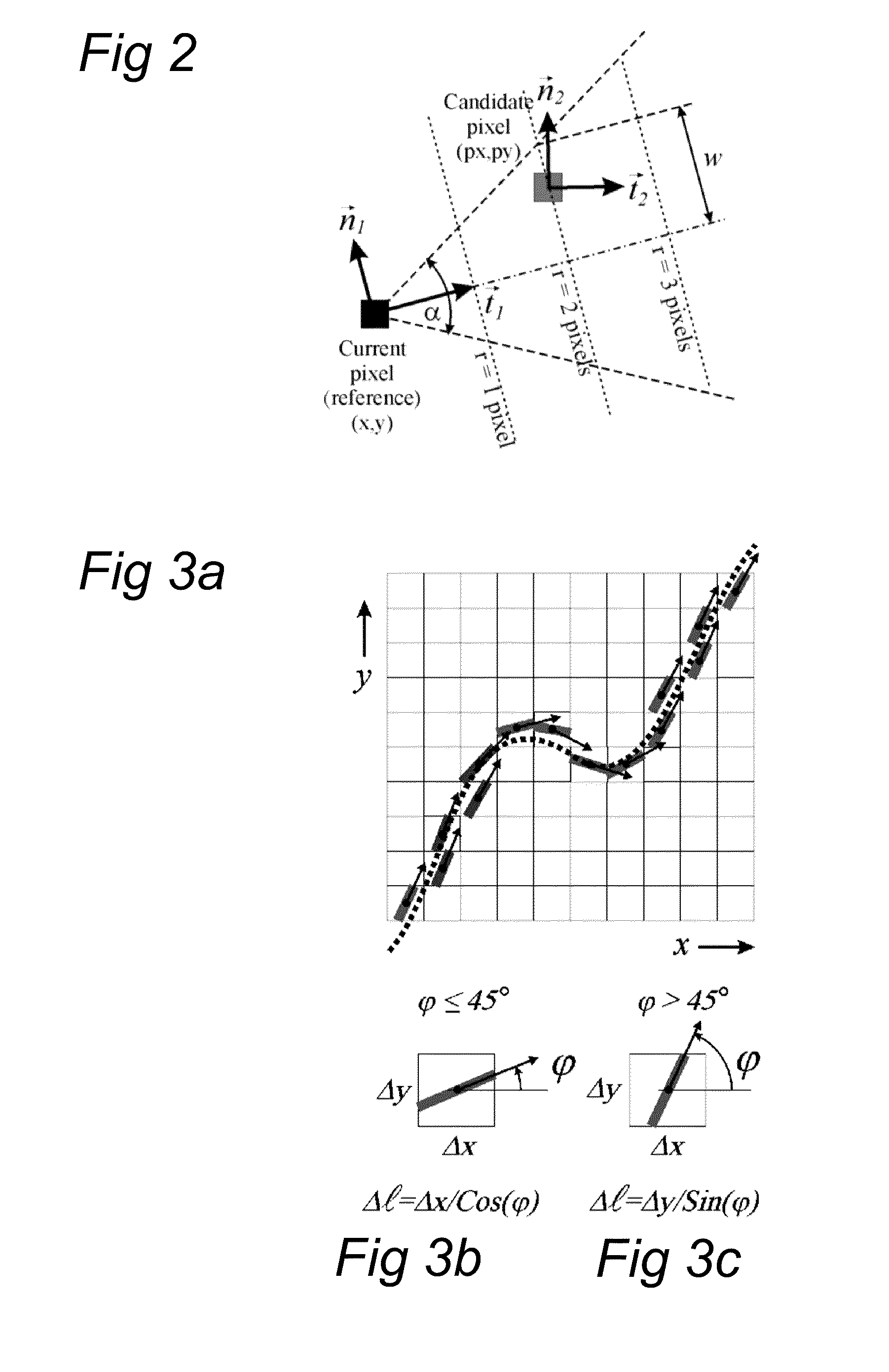Measurement of functional microcirculatory geometry and velocity distributions using automated image analysis
- Summary
- Abstract
- Description
- Claims
- Application Information
AI Technical Summary
Benefits of technology
Problems solved by technology
Method used
Image
Examples
Embodiment Construction
[0050]With currently available imaging techniques, such as capillaroscopy, OPS or SDF imaging, “vessels” are only observed in the presence of red blood cells that contain hemoglobin, which highly absorbs the incident wavelength in contrast to the background medium. The capillary vessels themselves are basically invisible to these imaging techniques in the absence of red blood cells. Videos of the microcirculation merely show plugs of red blood cells that are delineated by the vessel wall and are therefore referred to as “vessels”.
[0051]Vessel segmentation and blood velocity estimation using space-time diagrams requires many image processing steps. FIGS. 1A and 1B show flow charts indicating processing steps according to an embodiment of the invention. These processing steps can be executed by a computer arranged to perform one or more of the processing steps. In a first step 2, a microcirculatory video sequence is received from an imaging system. When making the video sequence, slig...
PUM
 Login to View More
Login to View More Abstract
Description
Claims
Application Information
 Login to View More
Login to View More - R&D
- Intellectual Property
- Life Sciences
- Materials
- Tech Scout
- Unparalleled Data Quality
- Higher Quality Content
- 60% Fewer Hallucinations
Browse by: Latest US Patents, China's latest patents, Technical Efficacy Thesaurus, Application Domain, Technology Topic, Popular Technical Reports.
© 2025 PatSnap. All rights reserved.Legal|Privacy policy|Modern Slavery Act Transparency Statement|Sitemap|About US| Contact US: help@patsnap.com



